Many hiking and tramping skills come with practise, but regardless of your experience there are a few key things you can do before you set off, and while you’re on the track, to make your trip safer and more enjoyable.
Choose the Right Track
Know your group: When selecting a route, start by considering the fitness, skills and experience of everyone going.
Understand track categories: NZ uses a national system to grade the level of each track. These help you choose a track that suits everyone’s fitness, skills and experience. Find out more about track categories on the Department of Conservation (DOC) website.
Learn about the location: Consider the terrain and environment. Even short walks can involve steep climbs or knee crunching descents, so know what’s ahead.
Factor in the weather: Even an easy track that is well-graded and maintained can be difficult in bad weather.
What to do Before Your Hiking or Tramping Trip
- Train: Being physically fit for the challenge ahead will help you last the distance and reduce the chance of injuries. You’re also more likely to enjoy the adventure!
- Plan your route thoroughly: Talk to your group members, locals and experts, and choose a trip that suits your skills. Excellent sources for local track information include Plan My Walk and DOC visitor centres.
- Pack smart: As a group, discuss your clothing and equipment requirements and check everyone has the items they’ll need. Make sure your gear is in good working condition and that everyone knows how to use it. Practice packing your gear before you go so you know it all fits, and adjust your pack so that it fits you comfortably.
- Go for a practise walk: Before you set off on your adventure, go for a short test run first. This is an opportunity to adjust your pack, check that your footwear is comfortable and you've got suitable clothing.
- Leave early: Give yourself enough time to get to the start of the track and your destination for the day. It’s much safer to get there earlier than be walking in the dark. Regardless, always pack a head torch, just in case.
Learn about Clothing and Equipment
Leave Your Trip Intentions
Sharing your plans with someone is an important part of trip planning, no matter where you’re heading. Things don’t always go as expected, and if no one knows where you are it can make getting help much harder. Letting a trusted contact know your plans is a simple step that can make a big difference in getting home safely.
Plan My Walk makes this easy. Once you’ve finalised your trip plan using helpful prompts, a link will be emailed to both your emergency contact and tramping group.
Learn about Leaving Trip Intentions
Top Hiking and Tramping Safety Tips
- Manage your temperature: Dress with layers and use these to maintain a stable temperature. It’s easier to manage your temperature by taking a layer off or putting one on. Remember, these layers shouldn’t contain cotton. Learn more about clothing
- Stick together: This way you’re able to support each other, work together when decisions need to be made, and help each other if the situation changes. Never leave slower or tired group members behind, stick with them and make it there together. Always wait at track junctions to ensure everyone regroups and goes the same way.
- Know where you are: Along your trip, take regular breaks to check where you are on the map and what lies ahead. This ensures you’ll keep to your day’s schedule. These breaks are also an opportunity to check in with your group and discuss whether you need to change your plans.
- Eat and drink regularly: Regular food and water will help maintain your energy and keep you hydrated.
- Maintain your pace: Aim to finish your day at the same speed as you began. This means travelling at a pace that you can maintain comfortably. Watch where you are placing your feet to avoid slips, trips and falls. The tortoise always wins the race!
- Keep your emergency communication device handy just in case you need it. Learn more about communications
- Be aware of mental shortcuts: Also known as heuristic traps, these are thought patterns that can negatively influence your decision-making. Learn more about mental shortcuts
- Approach river crossings with care: Rivers are a significant hazard in the outdoors and crossing a river that doesn’t have a bridge requires careful judgement and skills. Learn more about river safety
Have a Hmmm Hints
Aotearoa has some amazing scenery and hiking or tramping is a great way to see it. However, injuries can happen, and when we get hurt it affects our family, friends, workmates and many others around us too. Before you head out, here are a few tips to help you along the way… First, let’s have a hmmm.
Most tramping and hiking injuries are caused by slips and trips. You can prevent these by watching out for uneven ground and tree roots and wearing sturdy footwear for support. Here’s four top tips to preventing these injuries:
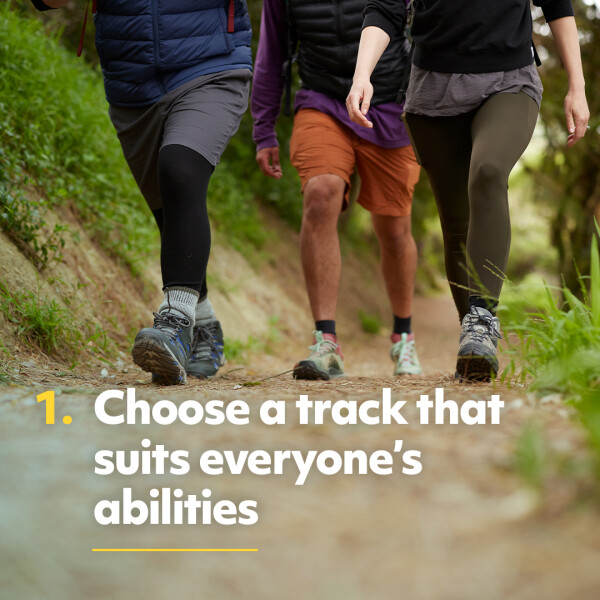
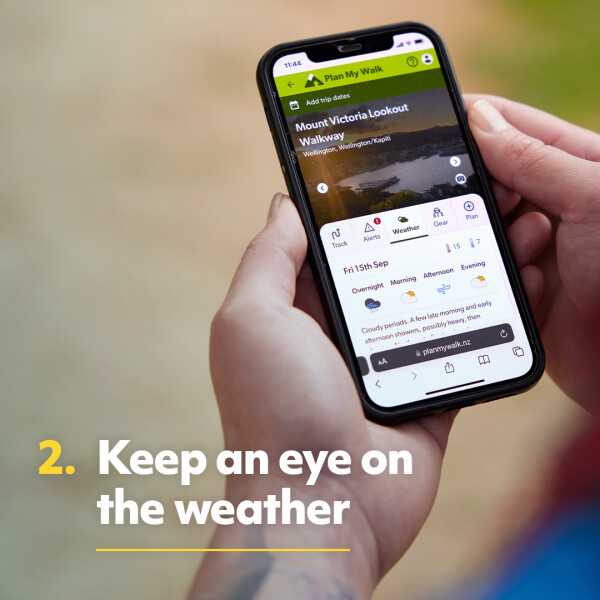
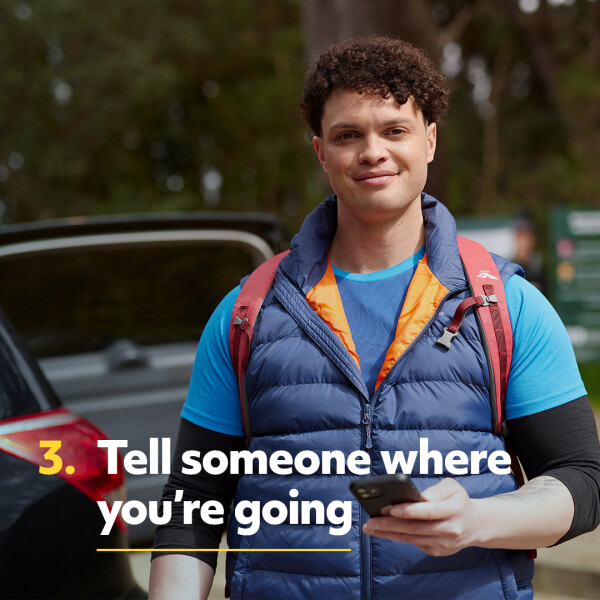
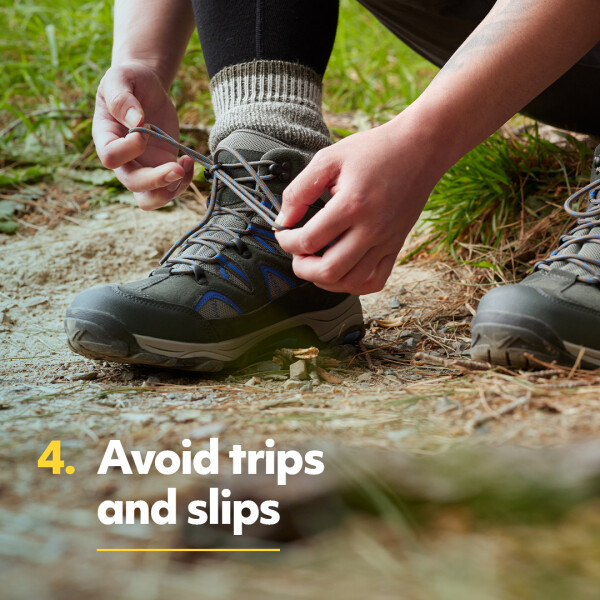
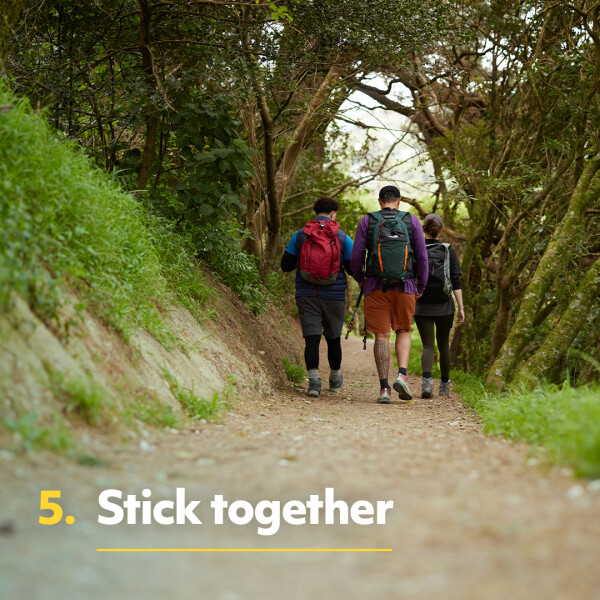
MSC is proud to partner with ACC to deliver these important safety messages.
Questions People Ask About Preparing for a Hike or Tramp in NZ
Before setting off, make sure you’re physically prepared for the challenge, plan your route thoroughly, and pack the right clothing and equipment. Always check local track information on Plan My Walk or with DOC visitor centres, and let a trusted person know your plans. Leaving early gives you more time to safely reach your destination without walking in the dark. Key hiking safety tips include managing your temperature with layers, eating and drinking regularly, sticking with your group, and knowing where you are on the map. Maintain a steady pace to reduce fatigue and slips, and always carry an emergency communication device. Approach river crossings with extreme caution, as rivers are one of the biggest hazards in the outdoors. When choosing a track, consider everyone’s fitness, experience and ability. A track that’s easy for you may be challenging for someone else. Think about how long it will take, whether you can complete it in daylight, and if there are river crossings or hazards along the way. Use Plan My Walk to find tracks that match your group’s skill level. New Zealand’s weather can change rapidly, so always check the forecast before you go. Pack warm clothes, a rain jacket, a warm hat and gloves, and emergency supplies such as extra food, even for short trips. Have a plan B in case the weather turns bad, and be prepared for anything from hot sun to heavy rain and strong winds.
What To Do Next
Continue your preparation with our online resources. There is still plenty to learn to ensure a safe and enjoyable trip!
Explore our trip planning resources
- Plan My Walk app | Use our free planning tool to choose tracks, get alerts, build a gear list and share your plan
- Pack like a pro | Watch our video on to packing, protecting and carrying your gear
- Clothing for the outdoors | Watch our video on essential clothing for walks, hikes and tramps
- Emergency communications | Find the best emergency communication device for your trip
Read our tramping stories
- Packing for the worst pays off for trampers
- Changing Plans: Trampers Share Their Stories
- How to Dress for Success in the Great Outdoors
This page was reviewed and updated October 2025